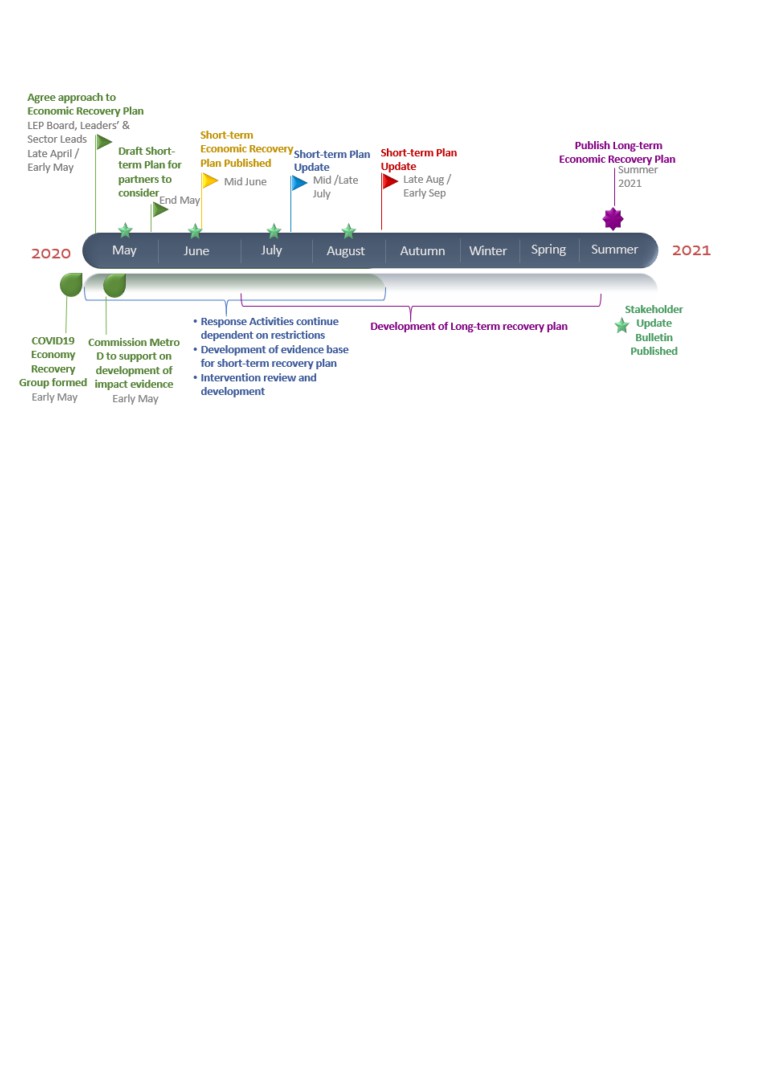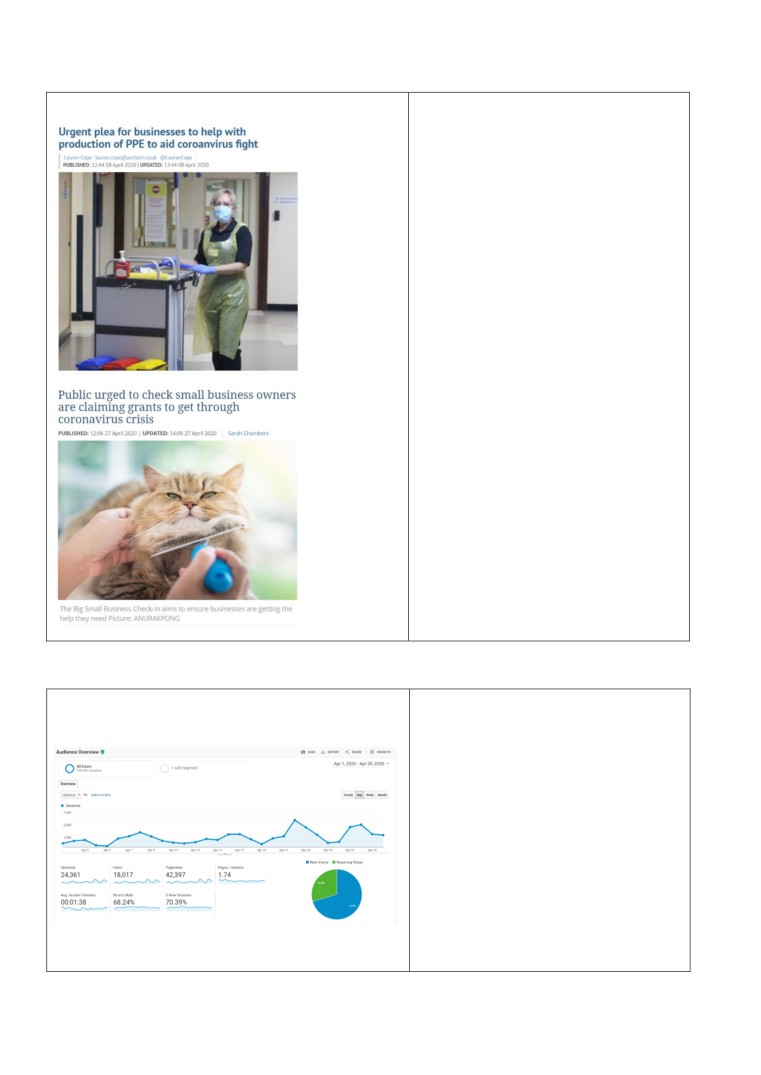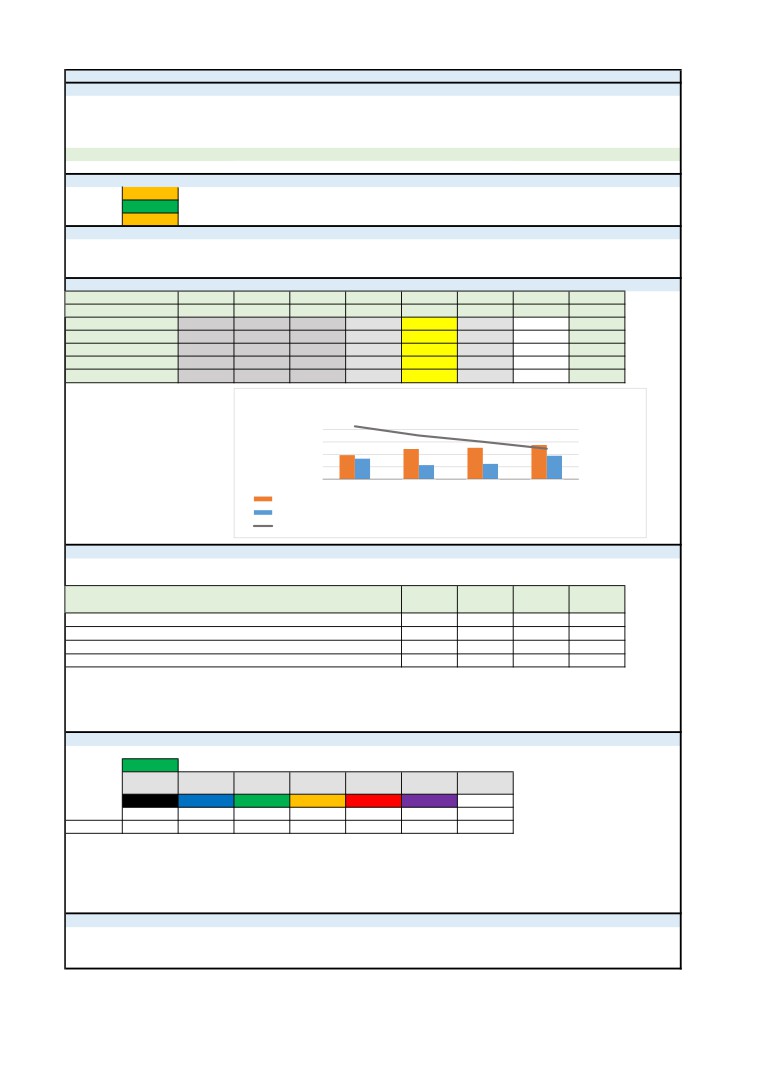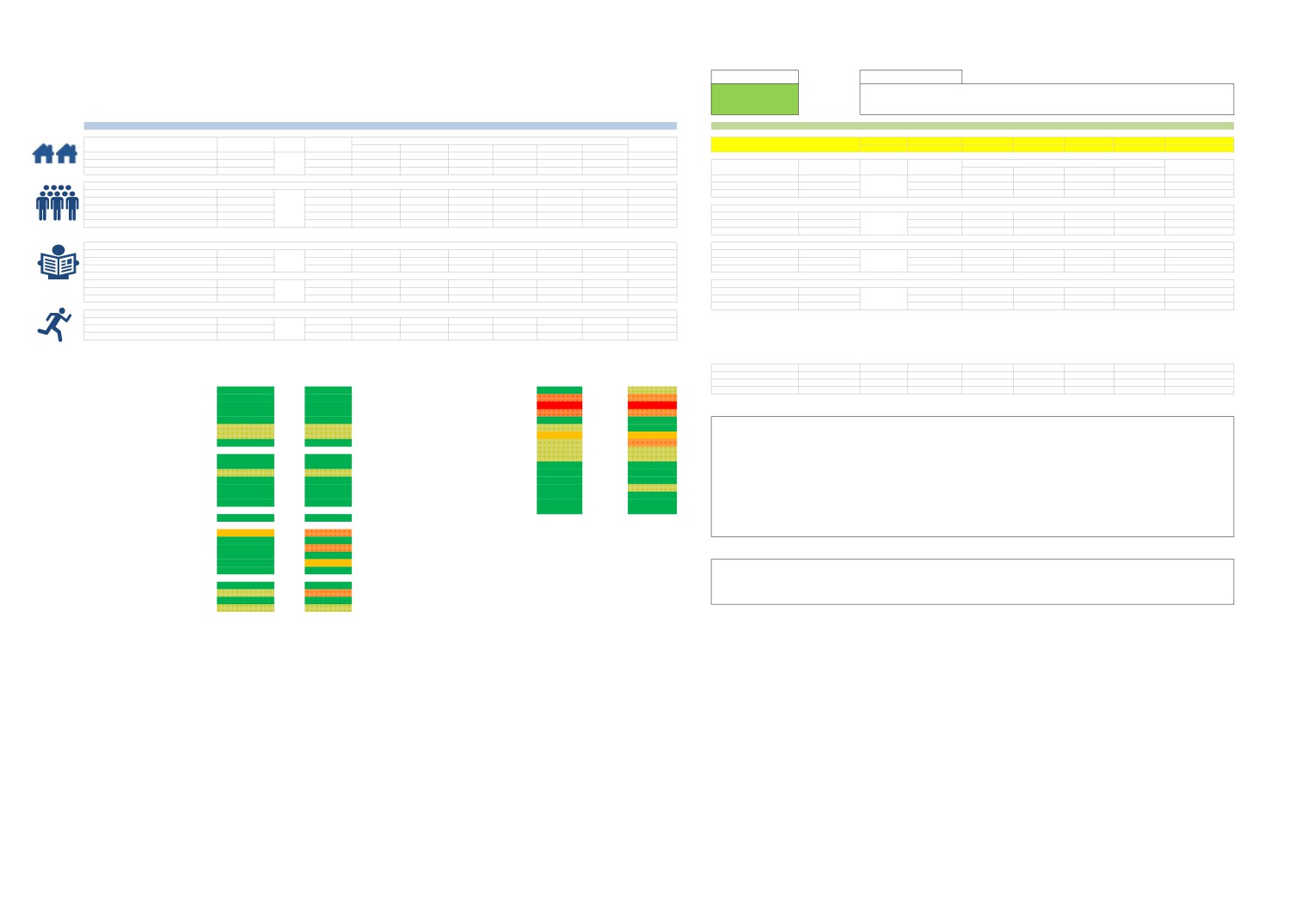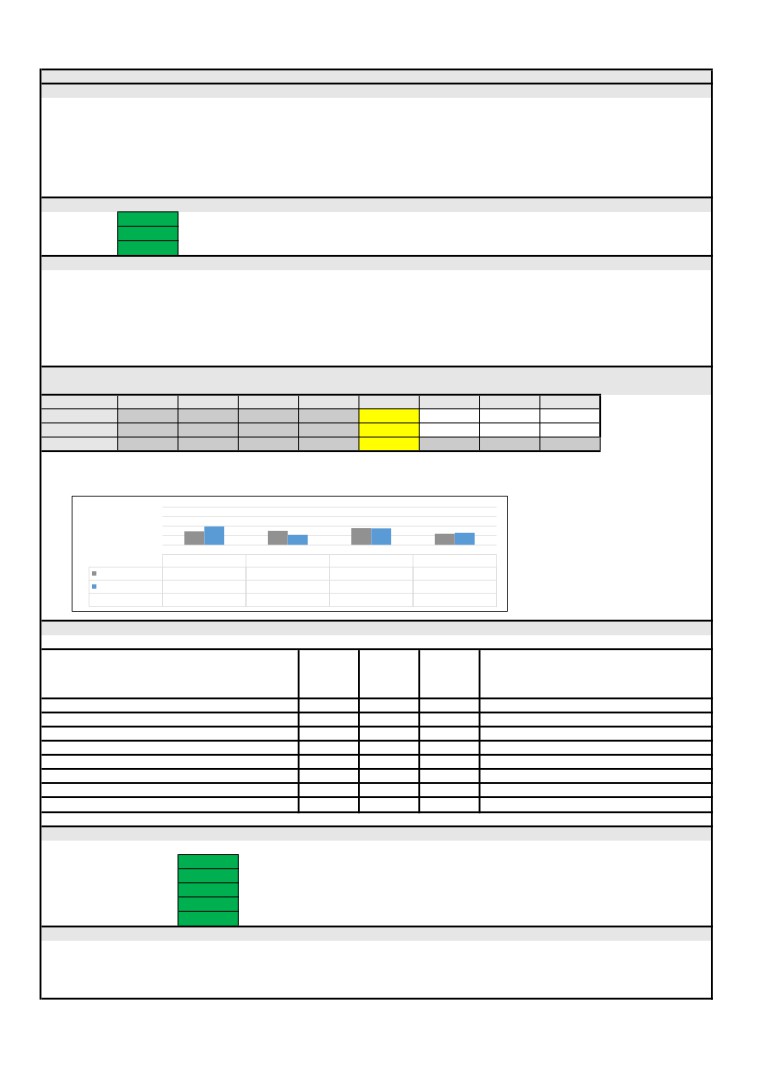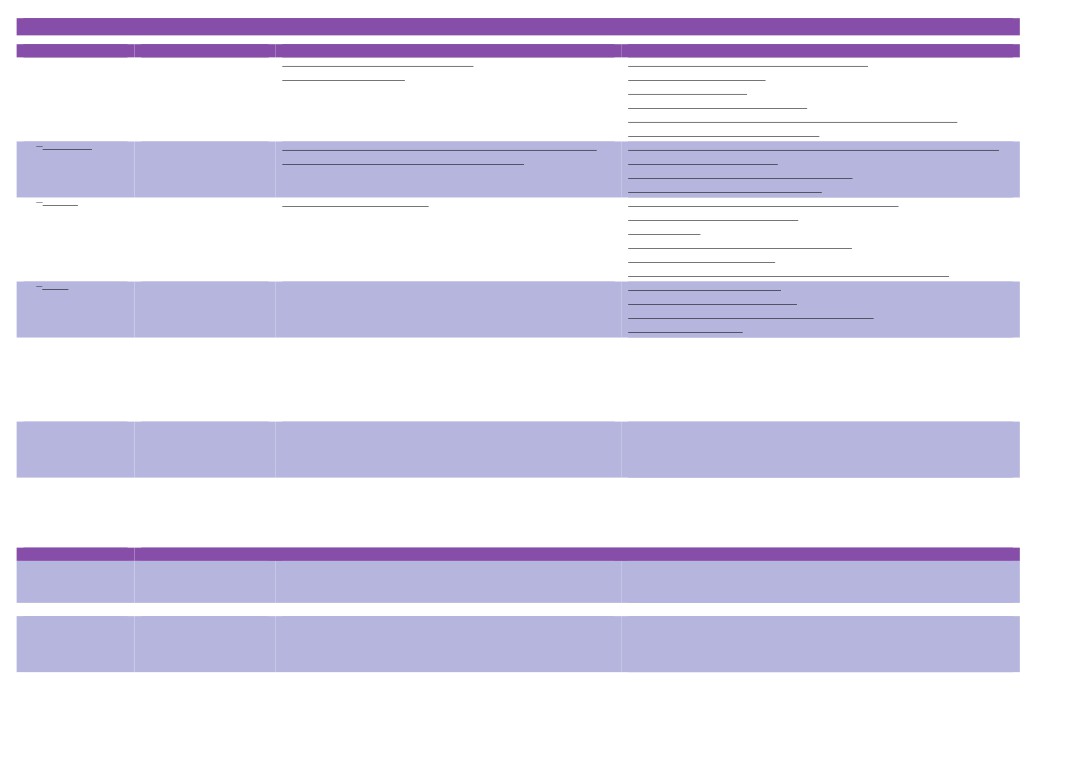New Anglia Local Enterprise Partnership Board Meeting
Wednesday 20th May
10.00am - 12.00pm
Via MS Teams
Agenda
No.
Item
1.
Welcome from the Chair
2.
Apologies
3.
Declarations of Interest
4.
Actions / Minutes from the last meeting
5.
LEP Response to COVID-19
Update
6.
Restart and Rebuild - Covid-19 Economic Recovery Plan
For Approval
Growing Place Fund - Food Innovation Centre Investment -
7.
For Approval
confidential
8.
LEP Capital Budget 20/21- confidential
For Approval
9.
LEP Continuing Business - including confidential items
Update
10.
Management Accounts - Q1 2020
Update
11.
May Performance Reports and Programme Dashboard
For Approval
12.
Investment Appraisal Committee Chair, Vice Chair and Membership
For Approval
13.
Board Forward Plan
Update
14.
Any Other Business
1
New Anglia Board Meeting Minutes (Unconfirmed)
21st April 2020
Present:
Claire Cullens (CC)
Norfolk Community Foundation
David Ellesmere (DE)
Ipswich Borough Council
Doug Field (DF)
East of England Coop
John Griffiths (JG)
West Suffolk Council
Matthew Hicks (MH)
Suffolk County Council
Pete Joyner (PJ)
Shorthose Russell
Helen Langton (HL)
University of Suffolk
Dominic Keen (DK)
Britbots
Steve Oliver (SO)
MLM
Corrienne Peasgood (CP)
Norwich City College
Andrew Proctor (AP)
Norfolk County Council
Johnathan Reynolds (JR)
Opergy
Sandy Ruddock (SR)
Scarlett & Mustard
Alan Waters (AW)
Norwich City Council
Jeanette Wheeler (JW)
Birketts
Attendees
Sue Roper (SR)
Suffolk County Council
Vince Muspratt (VM)
Norfolk County Council
Shan Lloyd (SL)
BEIS
Chris Dashper (CD)
New Anglia LEP - For Item 6
Chris Starkie (CS)
New Anglia LEP
Rosanne Wijnberg (RW)
New Anglia LEP
Helen Wilton (HW)
New Anglia LEP
1
Actions from the meeting: (21.04.20)
COVID-19 to be added as an item to future board meetings
HW
1
Welcome from the Chair
Doug Field (DF) welcomed everyone to the meeting
2
Apologies
Apologies were received from Tim Whitley.
3
Declarations of Interest
Full declarations of interest can be found at http://www.newanglia.co.uk/about-us/the-board.
None
4
Minutes of the last meeting
The minutes were accepted as a true record of the meeting held on 25th March.
5
LEP Response to COVID-19
Chris Starkie (CS) presented the paper to the board noting that some programmes are still
ongoing and this work is covered in Item 8 on the agenda.
CS highlighted the work carried out to set up a database of PPE suppliers which has now
been made available to organisations looking to source PPE. Promotion of this is ongoing.
Work is also starting on a recovery plan to support the local economy in the short and longer
term including a specific group which has been established to focus on supporting the
tourism industry and the challenges it faces.
Andrew Proctor (AP) highlighted the importance of co-ordinating the different strands of the
tourism industry and CS confirmed that the Destination Marketing Organisations (DMOs) are
working with the LEP as part of this group.
Jeanette Wheeler (JW) noted that staff in construction want to be working again but may be
prevented from doing so due to issues in the supply chain and the LEP could play a role in
resolving these problems.
JW also suggested that Richard Ross has details of business angels are looking to provide
business consultancy and could be available to the Growth Hub.
Claire Cullens (CC) noted that they could also provide support to the Voluntary Sector.
John Griffiths (JG) asked for an update on the gaps identified in current funding and also on
other problems businesses are reporting.
CS confirmed that gaps in funding had been identified such as bed & breakfast owners
paying council tax rather than rates. The refusal of insurance companies to pay some
claims has also been an issue as well as queries over furloughing staff. These are being
escalated and some gaps are being plugged over time.
The meeting discussed the issues around the procurement of PPE.
The Board agreed:
• To note the content of the report
6
COVID-19 Business Reliance and Recovery Plan
Chris Dashper (CD) presented the new scheme with an initial budget of £3.5m providing
capital grant support for initial resilience and longer term recovery.
2
AP expressed his support for the proposal but noted the size of the fund. CS agreed that
this would not cover all requirements but felt that it complemented other existing LEP
programmes.
CD noted that other programmes continued and that if they did not spend all their funding
then further monies could be made available.
The meeting discussed potentially targeting the scheme at specific sectors and the issues
this created and the potential for offering more funding at a later date.
CS confirmed that discussions were ongoing with Government for approval to reallocate
funds from capital to revenue projects and to obtain further future funding.
DF proposed that the launch of the scheme would initiate enquiries which would help steer
any targeting in the future.
CD confirmed that, on approval the first payments can go out within 10-12 days.
The Board agreed:
• To note the content of the report
• To approve the new Business Resilience and Recovery scheme with an initial budget of
£3.5m
7
Board Member Recruitment
David Ellesmere (DE) reviewed the process which had been carried out to recruit a private
sector board member and a Chair and detailed the rationale behind the decision. He said
the panel was unanimous in its recommendations.
The Board agreed:
• To note the content of the report
• To endorse the appointment of C-J Green as private sector board member
8
LEP Continuing Business
DF proposed that any questions should be directed to Rosanne Wijnberg outside the meeting.
The Board agreed:
• To note the content of the report
9
Board Forward Plan
DF requested that COVID 19 is added as a standing item to the next few meetings.
ACTION: Board Forward Plan for be updated accordingly
HW
The Board agreed:
• To note the content of the plan
10
Any Other Business
DE noted that there is still a vacancy on the Investment Appraisal Committee and that a new
Chair also needs to be appointed.
3
New Anglia Local Enterprise Partnership Board
Wednesday 20th May 2020
Agenda Item 5
LEP Response to COVID-19
Author: Marie Finbow
Presenter: Chris Starkie
Summary
This report provides the board with an update on the LEP’s response to the Covid-19
pandemic.
Whilst many of the LEP’s programmes and schemes are continuing to operate as normal, the
LEP team and operations have been restructured to respond to the economic shock caused
by the Covid-19 pandemic.
It is important to stress that the LEP is working closely with a wide range of partners including
all Norfolk and Suffolk local authorities, business groups such as the chambers and FSB,
colleges, universities and LEP sector groups.
Recommendation
The LEP Board is asked to note the contents of this report
Background
As previously outlined to the board, the LEP’s Covid-19 response is structured under seven
workstreams:
1. Business Intelligence
2. Business Support and Advice
3. Local Funding
4. Workforce
5. Sectors and Supply Chain - Sub workstreams PPE, Visitor Economy, Agri Food,
Energy and Construction.
6. Economic Impact
7. Communications
Set out below is a summary of the key activity which has taken place within each of these
workstreams over the last few weeks.
The LEP is working closely with local partners including all Local Authorities, Chambers of
Commerce, Federation of Small Businesses, Job Centre Plus and Department for Work and
Pensions.
1
9
1 Business Intelligence
Intelligence reports continue to be submitted to Government on a weekly basis.
Information is typically gathered from around 50 different sources each week including local
authorities, businesses and sector groups.
Most recently the narrative is shifting towards businesses reopening and what is needed
when they do to remain safe. Business sentiment from surveys seems to be improving in
terms of cashflow concerns and concerns about overall closures.
Highlights from the weekly return sent on 11th May include:
An urgent ask for the Job Retention Scheme to evolve with partial furloughing as we
enter the next phase.
Intelligence from the All Energy Industry Council, including a bleak outlook for oil and
gas; the short-term impact of refocusing on what is needed for offshore wind turbines
to keep spinning, ensuring safe shift patterns, and allowing for the good use of
planned outage periods; and ports highlighting the impacts of a reduction in activities.
In addition to the weekly returns we are now using the information to develop further
intelligence products:
A weekly high-level trends document summarising the trends from each intelligence
return.
A ‘gaps in support’ log has also been created setting out the specific gaps in the
government support schemes which is used to escalate issues and monitors
resolutions.
The intelligence collected is enabling us to be fleet of foot to escalate issues locally and
nationally, consider local solutions where appropriate and is supporting the discussions and
helping to shape all three stages of work- response, restart and rebuild.
It is enabling us to respond quickly in providing evidence and case studies to government,
MPs and local partners.
Business intelligence submitted by LEPs and other partners has resulted in policy
changes by Government including: changes to the furloughing regime, the introduction of
additional funding and flexibility in business grants awarded by local authorities and changes
to the Covid Business Interruption Loan scheme.
2 Business Support / Advice
The Growth Hub is continuing to provide support to businesses through its phone-based
service. This service complements on the ground support provided by local authority
colleagues.
A new rota system was introduced in early April, with additional capacity provided by the
Enterprise Adviser Network team, to bring the number of Growth Hub advisers able to take
calls to 25 people.
During March and April the Growth Hub provided in depth support to more than 2,000
businesses on Covid-19 related issues.
Enquiries into the Growth Hub have been broken down by theme:
Small Business Grant - 24%
Grants/Finance - 20%
Workforce and Employees - 12%
Support for self-employed - 10%
2
10
Business Interruption Loan Scheme - 10%
Business Rates Relief/Holiday - 10%
Deferring VAT & Income Tax - 9%
Commercial Tenants - 2%
Insurance - 2%
Companies House - 1%
The LEP is also helping local authorities provide up to date information to businesses on the
Government support schemes and other support through the production of a business
support script.
The script is updated on a daily basis and made available to the Growth Hub advisers and
local authority colleagues.
3 Local Funding
Business Resilience and Recovery Fund (£3.5 million)
The Business Resilience and Recovery Scheme was launched on Monday 4th May and
provides support to businesses in Norfolk and Suffolk that have been affected by the Covid-
19 Coronavirus and are looking at ways to recover and strengthen their business
performance.
As part of the process, an initial in-depth diagnostic exercise is undertaken by the New
Anglia Growth Hub advisers, to determine eligibility of the business and identify what type of
support they require.
Those companies applying under the scheme can also apply for a 50% grant towards capital
costs involved in initial resilience and future recovery of their business, A grant of £25,000 up
to a maximum of £50,000 is available to support projects. The scheme has proved popular
and several enquiries are already being handled, developed and progressed by the Growth
Hub.
The first application for £50,000 was approved by the end of the first week for a company in
Thetford. The grant will be used to obtain a new model of laser cutter which will enable the
business to secure additional contracts for work that is outside of their current capability
and increase efficiency (due to a decrease in downtime experienced with the old machine).
Covid-19 business tool kit
A new funding section has been added to the Covid-19 business toolkit, with links to key
external funding opportunities for businesses and charities. Information around Covid-19 is
changing rapidly and the toolkit has been created to provide the latest information, guidance
and support available to businesses all in one place.
VCSE sector
There is an emerging work priority around supporting the VCSE sector to respond to new
funding opportunities, working in partnership with both County Councils and VCSE sector
support organisations.
4 Workforce
Work continues identifying workforce challenges and gaps across sectors, working with
partners and the Department for Work and Pensions.
The employment opportunities page on the LEP website continues to grow rapidly.
There are now 144 listings with most of these having more than position available.
3
11
More than 2,000 people viewed the vacancies page in the first week of May alone.
The webpage is being further developed to include careers information, case studies, sector
insights and linked training opportunities.
5 Sectors and Supply Chain
Sub-workstreams currently include: PPE, Visitor Economy, Agri-Food, Energy and
Construction.
1. Personal Protective Equipment (PPE)
The LEP PPE supplier database now contains 196 suppliers and producers of PPE with
around 50% of the businesses listed based in Norfolk or Suffolk.
Around 850 different PPE products are now available on the system.
To date, more than 160 users have registered to use the system to source PPE - all
health or care providers or other front-line service.
We are in the process of seeking feedback from these users to help us shape the system
going forward.
Ten users of the system have so far informed us they have used the system to make
significant purchases of PPE.
Consideration is now being given to giving businesses access to the system, given the
expected increase in demand for PPE in the wider economy.
A further area of focus has been enhancing the manufacturing capabilities or upskilling of
companies to increase the supply of PPE locally. Work is underway in contacting potential or
existing PPE manufacturers across Norfolk and Suffolk to understand the scale
up/diversification challenges and support interventions they might need.
The team are also exploring ways to understand the long-term PPE requirements and local
demand to support this work.
Manufacturers are being linked to potential customers which has resulted in several
significant orders for local firms.
Local manufacturing capabilities are being fed into the new national database of capabilities
managed by Make UK.
2. C-19 Visitor Economy Group
It is widely recognised that the visitor economy has been hardest hit by the pandemic, and
the LEP and Visit East of England and all local authorities, the industry and destination
management organisations to establish a group to respond to the pandemic.
A region-wide survey of businesses to inform next steps and provide a foundation for a
recovery plan for the sector has been undertaken with 776 responses received, led by Visit
East of England. A draft report has been circulated, and the first analysis of the responses
has revealed:
Greater confidence from parts of the sector such as self-catering, Broads boats and
outdoor attraction of being able to adhere to social distancing. Some hospitality, retail
and catering businesses will find it more of a challenge and will impact the viability of
opening if they cannot operate at full capacity.
Timing of the easing of restrictions will be a key determining factor on business
survival - if businesses can open before the school holidays then recovery will be
easier.
Government intervention and packages are generally welcomed, more is needed,
particularly on VAT and Business Rates relief.
4
12
Visitor economy businesses need a move towards ‘flexible furloughing’ as many
have a lot of preparation work to do before they can open and start to see income
return.
Safe tourism is critical - both for visitors and residents. There is an opportunity to
promote Norfolk and Suffolk as a ‘safe destination’ with lots of space.
Adaptability - better digitization of businesses for example, online advance bookings
to manage footfall is needed.
The sector highlighted a need for more networking and sharing. Also creating better,
resilient supply chains between local businesses.
Continuing development of a year-round visitor economy would mitigate current
reliance on Easter to September and enable greater resilience in the long term.
The LEP has supported the region’s Destination Management Organisations (DMOs) with
bids to the Visit Britain Resilience Fund.
Five bids were submitted, to the first come first serve fund, four have been successful - Visit
East of England, Suffolk Coast, Ipswich, and Newmarket - Great Yarmouth are still waiting
to hear the outcome of their bid.
A call has been launched for accommodation providers who can open for key workers after
reports that those working on critical infrastructure e.g. offshore cannot find accommodation.
An online registration form has already been set up and is hosted on the LEP website with
details disseminated to accommodation providers by Visit of East of England.
28 responses have been received to date. When finalised, the list will be sent to Visit East of
England to host on their website and the LEP will use the sector networks to promote the list
to key workers looking for accommodation.
3. Other sectors
The LEP is working with partners to understand the impact of the pandemic on individual
sectors that make up the Norfolk and Suffolk economy.
Sector heat maps are being developed to look at the challenges and issues impacting each
sector.
A more detailed update on other sector activity will be provided in June’s report.
6 Economic Impact
A range of activity to assess the economic impact is underway. Agenda item x sets out a
proposal for developing an Economic Recovery plan. The proposed approach has two
phases - ‘Restart’ covering the next 10 to 12 months, with the first edition to be published in
June and updated every six weeks and ‘Rebuild’ covering 3-5 years to be published in
Summer 2021 and be informed by more robust evidence.
Metro-Dynamics has been commissioned, through the LEP’s framework agreement, to
support the work on impact assessment, scenario planning and developing the recovery
plans.
7 Communications
The PPE campaign about how organisations which do not usually need PPE can source it
received good coverage in local media, including BBC Look East on 27th April. The comms
team are now compiling case studies of firms producing PPE, to promote good news stories.
5
13
The ‘Big Business Check In’ campaign was launched on 28th April - encouraging people to
share grants information to their favourite local businesses to tell them what’s available and
gained good coverage in the local media.
We have continued to see a significant increase in traffic to the LEP’s website, with the most
popular pages being covid-19 related. The employment page alone saw 2,000 views in the
first week of May which equated to 22% of our website traffic for that week.
Focus is now moving towards social distancing messages as businesses turn their attention
to reopening. Whilst we await official guidelines, discussions are taking place with the Social
Distancing Communications Lead about how to start getting messages out and sharing good
practice.
LEP Network and wider engagement
As well as working with partners at a local level to respond to the Covi-19 pandemic, the
LEP has also been working at a national level via the LEP Network.
Working with the LEP Network and fellow LEPs is enabling the New Anglia LEP team to
articulate work being done locally and influence national policy.
National LEP activity has included:
Leading on the development of a policy paper around the relaunch of the Government’s
Enterprise Zones policy.
Participation in a LEP Network/Chambers of Commerce working group to look at
strengthening links between the organisations.
Participation in LEP Network chairs meeting with Government ministers.
Recommendation
The LEP Board is asked to note the contents of this report
6
14
New Anglia Local Enterprise Partnership Board
Wednesday 20th May 2020
Agenda Item 6
Restart and Rebuild - Covid-19 Economic Recovery Plan
Author & Presenter: Chris Starkie
Summary
The Covid-19 pandemic has been a significant health crisis, but also inflicted significant
damage to the economy.
LEPs were established by Government to facilitate private sector growth in their local areas by
bringing together local authorities, business and education. This has seen the LEP invest
significantly in projects and programmes to grow the economy, as well as produce with partners
the Economic Strategy and Local Industrial Strategy.
The LEP has supported local partners led by local authorities in the response to the pandemic.
As businesses prepare to recover from the pandemic, this paper recommends the development
of an economic recovery plan for Norfolk and Suffolk.
This paper has incorporated feedback from local authorities in both counties and is endorsed by
the chambers of commerce in both Norfolk and Suffolk and the FSB.
The plan will be developed by local partners and complement county and district plans, and will
comprise two phases: Restart, a tactical plan covering the next 12 months and Rebuild, a
strategic plan covering the 3-5 year period which follows.
Recommendation
The LEP board is asked to endorse the development of a Norfolk and Suffolk economic
recovery plan in two phases Restart and Rebuild as outlined in the paper
Background
The Covid-19 pandemic has been a very significant health crisis - but it has also inflicted
significant damage to our local economy.
Thousands of businesses have been forced to stop trading entirely, or seen income levels
reduce sharply, with the impact particularly felt in the tourism and retail sectors.
In the Response phase, local authorities have paid out millions of pounds in funding to local
businesses, thousands of businesses have been give support in accessing Government and
local support schemes, and the LEP’s new jobs service has helped workers find new roles.
But with the Government’s recovery road map now published (May 11) and businesses looking
to start trading again, an economic recovery plan for Norfolk and Suffolk is now required.
1
LEPs were established by Government to facilitate private sector growth in their local areas by
bringing together local authorities, business and education. This has seen the LEP invest
significantly in projects and programmes to grow the economy, as well as produce with partners
the Economic Strategy and Local Industrial Strategy. This means the LEP is well placed to help
coordinate an economic recovery plan, working in close partnership with local authority,
business and education colleagues.
Getting the economy back on its feet will not be achieved by one partner alone or by one strand
of investment or actions.
The economy is most successful when we work together for the benefit of the people who live,
learn and work in Norfolk and Suffolk.
A Norfolk and Suffolk wide economic recovery plan will complement local recovery plans being
developed at county and district levels which will cover individual places as well as health and
education. The plan will also feed into the Government’s national recovery plan. There is also
an expectation from Government that recovery plans will be developed covering LEP
geographies.
Whilst a two-county plan it will recognize different approaches and emphases between the two
counties and within the two counties, including urban and rural and types of business.
It will be developed by local authorities, business groups, educational institutions, the voluntary
sector and the LEP.
The economic recovery plan also needs to balance the short term need for action with the
recognition that recovery will take many years.
Therefore, the economic recovery plan needs to be divided into two distinct parts.
Restart: A tactical plan covering the period starting from June and covering the subsequent 12
months while businesses restart and start trading in an environment dominated by social
distancing.
This will of course include initiatives already launched in the Response phase.
Rebuild: A longer term 3-5 year plan to rebuild the economy which builds on the Economic
Strategy and Local Industrial Strategy and responds to long term changes brought about by the
pandemic.
There will be different phases of recovery as the Government’s recovery plan states the
lockdown will be lifted gradually, in phases. This will impact different parts of the economy at
different times meaning some response and recovery activity may run simultaneously.
And there will needs to be recognition that there will be differences in recovery plans in Norfolk
and Suffolk to reflect local circumstances and priorities.
It is important that our approach considers the transition between response and recovery and
be agile to the possibility that we may need to transition back into response if there are further
lock downs and to respond to potential issues caused by the ending of Government support
packages.
2
Restart - short term
Rebuild - long-term
Economic Recovery Plan
Economic Recovery Plan
•
A live plan covering the next 12 months
•
3 to 5+ year - plan recognising long term
which is flexible and regularly updated in
nature of the recovery
the light of new evidence and changing
•
Published in Summer 2021 replacing the
circumstances.
Restart plan.
•
First edition to be published in June 2020.
•
Builds on Economic Strategy and LIS and
•
Informed by business intelligence analysis
interventions in the Restart plan.
and scenario planning.
•
Retains focus on clean growth and
•
Considers the impact of the pandemic on
inclusive growth.
different sectors such as tourism, energy
•
Will take into account structural changes
and agri-food and develops support
to the economy brought about by
packages for each.
pandemic.
•
Covers role of local authorities in managing
•
Informed by a more robust evidence base
and supporting reopening of public spaces
- Baseline date which will start to show
and premises as well as other critical
impact will not available until 2021/2022
regulatory functions.
•
Looks at opportunities presented by the
•
Sets out clearly the role different partners
pandemic to support greater local
- LAs, LEP, BROs and others will play in
purchasing both by the public sector and
providing support to businesses.
the private sector.
•
Identifies funding programmes and other
•
Uses foundations of productivity as a
interventions needed to help businesses
framework for development - Business
navigate a working environment
Environment, People, Ideas,
dominated by social distancing as well as
Infrastructure and Place.
diversify.
•
Sets out medium to long term
•
Considers the role of transport as an
interventions and a local investment plan.
enabler of the recovery.
•
Signed off by local partners with
•
Considers the impact of the pandemic on
Government.
the labour force and required skills and
employment interventions
•
Sets out steps to create long term plan.
Evidence Base
Both the Restart plan and the Rebuild plan will need to be built on sound evidence.
Much of the statistical impact on the economy will not be available for some time. Baseline data
will start to be available from Spring 2021.
Business intelligence and scenario planning will be the most effective way in the short term to
help inform a recovery plan.
The evidence base that informs the Restart plan is made up of a number of products some of
which have already been developed by the LEP, Suffolk County Council, Norfolk County
Council and other partners including the chambers of commerce and FSB.
3
We already have a detailed understanding of the economic make-up of the two counties down
to district level, as well as up to date data on employment and increasing information on the
take up of Government schemes.
The following additional products have already been developed by the LEP and local authority
partners as part of the Response phase.
• Trend analysis of business intelligence. This sets out an analysis of trends identified
in the weekly business intelligence reports and is aligned with government
announcements on support schemes.
• Sector heat map which considers the risks and opportunities for each sector covering -
demand, supply chain, workforce and operations.
• Business support gaps analysis - sets out the identified gaps in government support
schemes.
• Escalation log - A record of issues and challenges effecting the economy which have
been escalated to government.
• Data on take up of Government schemes. Some information is available on the
increase in claimant counts, redundancies and where funding has been distributed to
businesses.
Additional products can be developed over the next three weeks:
• Scenario planning - a series of scenarios which will build projections as to when the
Norfolk and Suffolk economy could expect to return to pre-outbreak levels of growth.
• Sector snapshots - an illustration of the challenges and opportunities initially focused
on critical sectors which will include some projected data based on a range of scenarios.
• Place snapshots - an illustration of the challenges and opportunities within a
geographical area.
• Analysis of impact on projects and initiatives - assessment on local projects
identifying potential delays.
Much of the development work can be done by LEP and local authority colleagues, but we will
also utilize Metro Dynamics to provide a small amount of specialist support, particularly to look
ahead to how emerging trends such as home working and changes to commuting patterns will
impact on the restart and rebuild of the economy.
Metro Dynamics have previously provided support through the Economic Strategy and LIS as
well as Brexit work. Funding for this piece of work (£30k) can be resourced from the LEP’s
existing budget.
It will be important to develop a more robust evidence base and the mechanisms to inform
intervention developments, monitor progress and ensure interventions are creating the most
appropriate environment to support a fast recovery.
Over the next 12 months working with partners we will also need to:
• Review and carry out an assessment of economic indicators and develop new
mechanisms to help track the economy.
• Expedite the work on supply chain analysis.
• Update of evidence bases in Q1 2021.
• Set up sector Focus groups of up to 12 businesses who will invited to take part in a
series of sessions over a period of time, to measure and track changes in
circumstances and inform the Rebuild plan.
It is also our intention to work in partnership with our local universities on developing the
evidence base and scenario planning.
4
Interventions
It is important that both the Restart and Rebuild recovery plans provide clear direction on the
interventions available to support the economy to get back on its feet as quickly as possible, as
well as making advances where possible.
Some of these interventions will be LEP wide, with others county wide or district wide.
The proposed approach to identify and develop the interventions for the Restart plan includes:
• Review the impact of interventions delivered through the response phase to consider
extending or amending.
• Review the Economic Strategy and LIS interventions to identify relevant intervention
currently being implemented.
• Work with Local Authorities to consider local authority led interventions which use their
regulatory and statutory powers e.g. business rates relief discretionary grants and
changes to planning rules.
• Review the Expression of Interest received to date as part of the development of the
LEP’s Investment Plan.
• Complete a mapping and gap analysis of local and central funding.
• Consider new interventions including ones that will support people made redundant and
require skills support.
• Consider new interventions to support businesses move online and adapt their
operations in the light of social distancing measures.
Governance
It is proposed that an officer led Economy Recovery group (which will be based on a similar
structure to the Economic Strategy Delivery Coordinating Board) will form and take on the role
of Steering Group for the day to day development.
This would include staff from local authorities, the LEP as well as other partners such as the
chambers of commerce, FSB and education partners.
This would report into the LEP Board and the Local Authority Leaders groups in Norfolk and
Suffolk on a regular basis.
The LEP Board, LA Leaders and Sector Chairs will be engaged during the development and is
proposed to be done through a series of briefings and existing meetings to ratify direction and
test the emerging plan.
5
Timeline
Recommendation
The LEP board is asked to support the development of the recovery plan in two phases Restart
and Rebuild as outlined in the paper
6
New Anglia Local Enterprise Partnership Board
Wednesday 20th May 2020
Agenda Item 9
LEP Continuing Business Report
Author: All, Rosanne Wijnberg
Presenter: Rosanne Wijnberg
Summary
This report provides an overview of LEP team ‘continuing business’ activities since the April
board, structured around:
1) Programmes
2) Strategy
3) Engagement and promotion
4) Governance, Operations and Finance
The media dashboard is attached as an appendix to the report
Recommendations
The board is asked to note the contents of the report
1) LEP Programmes
Growth Deal (Capital Growth Programme)
Delivery of all large capital projects has slowed considerably over the past two months, with
many construction sites closed or reducing work for safety reasons. Several projects have used
this time to plan and reschedule activities to minimise the impact.
Work on refurbishing and replacing part of the headquarters of the Centre for Environment,
Fisheries and Aquaculture Science (CEFAS) in Lowestoft is only progressing where social
distancing guidelines can be adhered to. Consequently, demolition of the former Grand Hotel to
enable extension of the car park and landscaping has been stopped and completion of the
project has been pushed back from the end of summer 2020 to later in the year.
The revised Strategic Outline Business Case and supporting papers for the Ely Area Rail
Enhancement Project has received approval from a special Anglia Programme Board led by
Network Rail and the Department for Transport. This is the first positive step toward securing
additional funding for further development of the programme, to include environmental surveys,
consultation work and preparation of a Transport & Works Act Order that will authorise alteration
to the railway path and boundaries.
Business Growth Programme
The Business Growth Programme remains ahead of its output and spend profile. A further four
applications, totalling £55,333 were approved in April, with match funding of £221,336.
1
The Q1 claim for the Programme (December 2019 to February 2020) has been submitted to
MHCLG and totals £1.295m, taking the 2019/20 cumulative total to £6.107m or 103% of the
target. We are still awaiting sign off of our Project Change Request (PCR), requesting an
additional £1.1m of ERDF funding to enable the Growth Hub and Small Grant Scheme to operate
until the end of November 2021 We understand that this will take longer than usual due to the
current situation. We have been advised that we are due to receive an additional £249.5k from
BEIS for business support activities. We await details on the funding criteria.
Growth through Innovation
The Growth Through Innovation (GTI) fund is now operational, providing grants between £1,000
and £25,000 for capital and revenue investment into SMEs for a wide range of Innovation,
Research and Development activities. We have nine projects under development, supported by
the Growth Hub. One application for £22,500 has been approved. We are working with a range
of partners to promote the fund and have seen a high number of ICT businesses showing
interest.
Growing Business Fund
Interest in the GBF continues, particularly from the manufacturing sector. In April an application
for £82,010 was approved, with private sector match of £328,040. We have a further two
applications for May - for £434,290 of funding with £3,908,742 of private sector match. The three
applications will generate 34 new jobs between them. The pipeline remains buoyant, although
payments for grants has slowed during the past month.
Eastern Agri-tech Initiative
After a long delay three applications are with the panel for voting. A further four companies have
applied for grants, due diligence is being carried out by Norfolk County Council and they will be
considered by the panel shortly.
A considerable pipeline of further projects exists, but the CPCA has temporarily prioritised
delivery of their new capital intervention programme. We are in discussion with them regarding
future delivery.
Growing Places Fund
In April the LEP Board approved the transfer of the uncommitted balance of this fund to support
the new Resilience and Recovery Fund - £3.5m.
Gainsborough’s House development drew down its full allocation of £250k in April. A slowing in
project drawdown now seems inevitable.
The Winerack loan arrangements are subject to review by Homes England following a request
from the developer. The loan arrangements and the view of Homes England on these
arrangements will be considered by the IAC in the near future. This has taken longer than
anticipated.
Work with Lotus is ongoing to identify what development costs are eligible, under State Aid, for
LEP support. We estimate that an initial payment of circa £300,000.
New Anglia Capital
New Anglia Capital directors have continued to review potential investments first considered at
the January NAC Board meeting.
A proposal has been put forward to review the terms of NAC investments to see if the fund could
be better used to support businesses through the Covid-19 emergency. A meeting will take place
prior to the next NAC Board meeting, to be held in June.
2
Anglia Capital Group continue to support NAC. Hannah Smith, having left ACG in early April, has
been retained for one day per week to support NAC for the next few months.
LEP Innovative Projects Fund
Innovative Projects Fund (2018 Call) - £500,000.
IPF1 Summary of Progress:
7 projects under the 2018 call of the Innovative Projects Fund have a combined IPF allocation and
commitment of £539,531. The value of claims for the first year (2019/20) was £140,001. Since the
end of the financial year a further £9,076 has been spent. This now brings actual spend to date to
£149,077. Forecast spend of £214,507 is expected for 2020/21.
The Ipswich Cornhill Project has now been completed (IPF1). The project attracted £57,391 in
Public Match Funding and £34,301 in Private Match funding. It created 62 new events in the
Cornhill, increased dwell time in the Cornhill area by 9.75% and created a 27.75% increase in visits
to the area. The project was awarded a further £50,000 under the 2019 call of the IPF.
Project delivery has been impacted by Covid-19 restrictions. Two projects continue to make
progress - the Fit for Nuclear Project will deliver its course online until August 2020, at which point
the course will revert back to the classroom environment if possible. Visit East of England’s project
also continues as this represents mostly desk based work at this current time.
Enterprise Zones Update
Work is progressing well on the construction of the major new distribution centre for Amazon on
the Eastern Gateway Enterprise Park at Sproughton near Ipswich, one of the Space to Innovate
Enterprise Zone sites. Despite Covid-19 restrictions, development has been able to continue
almost as planned and so is due for completion by June. Approximately 100 jobs will be created
initially including permanent jobs recruited by Amazon and additional posts hired by independent
delivery companies.
Plans for the major Gateway 14 development site at Stowmarket has also taken a step forward,
developers Jaynic have been officially appointed to oversee the scheme. Part of this strategically
important site, located close to the A14, is designated a Space to Innovate Enterprise Zone site.
3
Overall, up to 2.3 million sq ft of business, logistics and commercial space can be provided over
the next 10-15 years on Gateway 14 and a planning application will be submitted later this year
The New Anglia LEP Enterprise Zone Team continues to liaise with Local Authority partners,
landowners and developers to identify any specific issues arising from Covid-19 impact on
construction and delivery of our Enterprise Zone sites.
Inward investment
Invest East ERDF project: Investment Readiness activity continues with seminars (for the first
time) taking place using a web-based format for the third cohort of the programme involving over
30 companies. Participants are from a wide range of sectors including: agri-robotics, clothing,
cosmetics, digital HR, marketing, gaming, media, energy and energy supply chain, construction,
training, and fintech.
A bid to create a second, High Potential Opportunity (HPO) was submitted to Dept for
International Trade (DIT), centred around Norwich Research Park with a focus on the healthy
ageing Grand Challenge. DIT’s HPO programme has been successful so far, generating a
number of leads and 3 successes already, after only a few months of promotion.
Working with colleagues from DiT and BT, a training presentation resource is being created on
the first New Anglia HPO (Adastral Park 5G) to enable colleagues to promote the 5G opportunity
effectively. This involves a set of digital material from our team and partners, building upon
assets created by the Tech East network.
A US offshore wind supply chain initiative is being explored with the Dept of Economic
Development in Virginia Beach, the biggest city in Hampton Roads, Virginia. A 2.7GW array is
planned off the coast comprising 220 turbines. Online discussions have taken place to enable
local businesses to engage with the opportunity this market may represent.
The inward investment team are currently managing 12 new enquiries, pertaining to interest in
investing into the medtech sector, energy storage, offshore port services, food processing and
production and healthy living technology.
2) Strategy
Skills:
The LEP has provided evidence to the Skills Advisory Panel team at the Department of
Education of our 2019/20 spend; and submitted the signed memorandum of understating for
2020/21. Part of the agreement moving forward is to produce a Local Skills Report which has
been drafted and shared with Skills officers at Norfolk and Suffolk County Councils.
Institute of Technology (IOTs)
The Department for Education has published a prospectus for phase 2 IOTs outlining criteria for
bids. It is expected that only one proposal will proceed going forward and the LEP team and LAs
are considering the best approach.
Careers Hub
The LEP has submitted an Expression of Interest to the Careers Enterprise Company to support
the expansion of the careers hub across Norfolk and Suffolk which would enable the proposal
under the ESF bid to commence from September, ahead of successfully securing ESF funding.
4
Enterprise Advisor Network
The Enterprise Adviser Network continues to provide support to Careers Leads and Teachers
through virtual CPD sessions and online resources.
Infrastructure:
Transport Board
The next meeting of the Transport Board on 2nd June will take place virtually focusing on the
impact COVID-19 on transport and considering the challenges and opportunities for recovery.
Integrated Ticketing
Progress on integrated ticketing being made with Suffolk colleagues. Discussions taking place
with Norfolk.
Trowse Rail Bridge Upgrade
The Reliability and Capacity study is expected to be finalised at the end of May. A joint position
statement is also being developed for discussion.
Transport East
A ‘ways of working’ workshop is arranged for 19th May to build on what already works well, and
scope out how the expanding partnership team could work better. The decarbonisation study is
progressing with the first phase expected to be complete by June.
Blue Tech Cluster Opportunity
Work has commenced on scoping the Blue Tech Hot House event centred around innovation and
opportunities at Felixstowe Port.
3) Communications and Engagement
This section covers engagement activity with local stakeholders, including local authorities, local
businesses and MPs. It also covers activity with Government and our wider international activity.
The Communications and Engagement Dashboard is included as Appendix A to this report.
New Anglia LEP website
The redeveloped New Anglia LEP website launched in mid-April. The new site has been
designed to improve the user journey, making it clearer for businesses to understand what the
LEP does and how we can help them. Among the new features is an interactive investment map.
A number of new Coronavirus business support pages have also been added.
Delivery plan
The New Anglia LEP delivery plan has been published on the website at
New Anglia Innovation Board
The New Anglia Innovation Board held their May Board meeting with an update from Cefas on
the multi-million-pound redevelopment of their site at Lowestoft, supported by the LEP. With a
theme of ‘innovation in energy’, presentations were also given on the All Energy Industry Council
and Offshore Renewable Energy Catapult and the progress being made to date. There are plans
to develop new project activity including a proposed Centre of Excellence for Energy Systems
Integration.
A delivery plan for the Innovation Board has now been developed which highlights how planned
projects and activity align with the LIS interventions and also how these might support recovery
plans post-Covid19 across key sectors. The innovation centres, technology parks, research
institutes and universities all have an important role to play in supporting economic recovery for
Norfolk and Suffolk and at a national level.
5
Sector Groups and Industry Councils
The Agri-Food Industry Council and All Energy Industry Council held their main board meetings
on 21st and 30th April respectively with a key focus of the discussion on the impact of Covid-19 on
the sectors and importantly how industry can work together with the LEP, Local Authorities and
other partners on recovery plans going forward. Industry Councils will have an important role to
play in helping drive economic recovery going forward as well as supporting the key strategic
interventions set out in the Local Industrial Strategy.
The LEP and partners continue to engage and work closely with other sector groups such as
manufacturing (NAAME), visitor economy and culture etc. to progress plans on future support for
these key sectors and any specific interventions required to aid post-Covid19 economic recovery
plans.
4) Governance, Operations and Finance
This section provides an update for the board on any key operational matters as well as a
headline summary of the LEP’s operational finances.
Risk Register
The current risk score for risk 11, Growth Deal Delivery, remains at high risk. The coronavirus
pandemic has introduced additional delays. We will continue to work with individual projects to
mitigate against this impact and will consider capital swap arrangement if appropriate.
Finance
In previous years our Growth Deal allocation has been paid in April. We have recently been
advised that the payment of our 2020/21 Growth Deal allocation of £47.4m from Government will
be staged - with 2/3 to be paid in May and 1/3 to be paid in September, the final payment being
subject to a review of progress. This will have an impact on our interest earned and the
assumptions made in our operating budget.
Our £500k Core Funding was received at the end of April.
Our draft 2020/21 Capital Budget is included in this month’s papers for Board approval.
Preparations are ongoing for our 2019/20 audit. Price Bailey will undertake the audit remotely
during the two weeks commencing 18th May. The Audit and Risk Committee is scheduled for 23rd
June.
Recommendation
The board is asked to:
• Note the contents of the report
6
Communications activity April
2020
This dashboard sets out the outcomes and impact of communication during April
2020 through owned media - the information which we control and issue ourselves -
and earned media (third-party outlets). (*Refers to pre-GDPR numbers)
Owned media - social media channels and e-newsletters
April 2019
March 2020
April 2020
New Anglia LEP
Number of Twitter followers
7,709
8,322
8,402
Number of clicked links per month
349
212
741
Average Twitter engagements per
46.77
69.1
157.53
day (likes, retweets etc.)
Number of impressions (the
74.3K
121K
252K
number of times a tweet showed in
someone’s timeline)
Number of LinkedIn followers
754
2,097
2,292
Number of impressions on LinkedIn
N/A
45.1K
39.5K
E-newsletter: open rate
39.18%
33.77%
37.84%
E-newsletter: click-through rate
33.1%
17.65%
23.38%
Norfolk & Suffolk Unlimited
Number of Twitter followers
N/A
426
456
Number of clicks per month
N/A
37
33
Average Twitter engagements per
N/A
16.5
25.56
day (likes, retweets etc.)
Number of impressions (number of
N/A
37K
25.2K
times users saw our tweet)
Number of LinkedIn followers
N/A
731
761
30
Top Tweet - New Anglia LEP
We have played a key role in
coordinating the appeal for businesses
to manufacture or supply personal
protective equipment (PPE) to frontline
workers. This produced our best
performing tweet, earning more than
6,300 impressions, 23 likes and 27
retweets.
More than 180 companies have
responded to the appeal for
businesses to help supply PPE and the
posting and sharing of posts like this
has really helped promote this
campaign.
Top Tweet - Norfolk & Suffolk Unlimited
Our top tweet for April was a photo of
the restored Venetian Waterways in
Great Yarmouth, which earned more
than 2,000 impressions, 21 likes and 9
retweets.
31
Media coverage - New Anglia LEP
The LEP’s proactive and coordinated
response to the Covid-19 pandemic,
especially around the PPE shortage,
has earned widespread media
coverage. The Eastern Daily Press ran
a story (opposite) about the appeal for
local businesses to get involved in
meeting the demand for equipment for
those on the frontline, quoting Chris
Starkie. He was also interviewed about
the issue on BBC Look East.
We have also been helping councils
promote the availability of grants to
help small businesses through the
crisis, with Chris Starkie interviewed on
BBC Radio Suffolk. In addition, we
introduced the Big Small Business
Check-In, which encouraged people to
let their favourite business know they
might be eligible for funding. This was
covered by the East Anglian Daily
Times.
Google Analytics - New Anglia LEP website
Traffic to the LEP website soared
during April, with 42,397 page views
(up 26,616 on March) and 18,017
users (up 12,365 on March). The
most popular pages were COVID-19-
related: employment opportunities
(13,703), PPE data capture (4,307),
business grants available through local
authorities (1,224) and free support for
your business during Coronavirus
(709).
Visitors spent an average of 1:38
visiting the site (down 32 secs) and of
those visiting the site, 70.466.8% were
new (up 3.6%) and 29.6% were
returning (down 3.6%).
32
New Anglia Local Enterprise Partnership Board
Wednesday 20th May 2020
Agenda Item 10
Management Accounts - January to March 2020
Author: Rosanne Wijnberg
Presenter: Rosanne Wijnberg
Summary
This report provides board members with an update on the LEP’s finances for the period ending
31 March 2020. The report includes confidential appendices:
Appendix A - management accounts period ended 31 March 2020
Appendix B - grant analysis period ending 31 March 2020 (graphs)
Recommendation
The board is asked to review and note the management accounts and accompanying graphs.
Management accounts - 31 March 2020
In previous years we have reported performance monthly against the Core Budget. We have
amended the approach for the 2019/20 financial year and the management accounts are now
being reported quarterly and will reflect the consolidated position, showing both Core and
Programmes.
The LEP’s consolidated management accounts for the period Apr 2019 to March 2020 are
attached in Appendix A.
As a reminder, Core covers the work of the LEP including:
-
Developing and delivering the economic strategy.
-
Engagement with central Government and national agencies.
-
Engagement with our local authority partners, education partners, with business and the
voluntary sector.
-
Governance and management of the LEP
-
Management of our sector groups
-
Innovation and Inward investment
-
Support for partnership initiatives such as Cambridge Norwich Tech Corridor, Ipswich
Vision and the Opportunity Areas
Programmes covers programmes and projects delivered or managed by the LEP including:
Growth Deal, Growth Programme, Enterprise Zones, Growing Business Fund, Growing Places
Fund, Enterprise Adviser Network and Apprenticeship Levy Fund.
1
33
Income Explanatory Notes
New Anglia core
This is core funding the LEP receives from government, plus the match funding received from
our local authority partners. This also includes the additional £200k capacity funding to support
the development of our Local Industrial Strategy.
New Anglia grant/programme income
Most of this income is the LEP’s Growth Deal - £24.6m this year. The grant element is allocated
when it is received, the top slice is accrued on a monthly basis, as costs are incurred.
This category also includes income from the LEP’s Enterprise Zone Pot C, which is recognised
as it is received.
In addition, the LEP has received contributions from our local authority partners for round two of
the Innovative Projects Fund - and additional £1m. This initiative was not included in our budget,
resulting in a variance.
New Anglia Recharges
This is mostly the recovery of costs from the Business Growth Programme (ERDF programme).
It also includes income (recovered costs) from other LEP initiatives such as the Norwich
Opportunity Area and Cambridge Norwich Tech Corridor.
EAN Income (Enterprise Adviser Network)
This income is from claims submitted to the Careers & Enterprise Company, plus contribution
from the LEP’s Enterprise Zone Pot C fund. This match funding contribution was previously
agreed by the board.
Interest received
The LEP receives interest from money it loans out through its Growing Places Fund. It also
receives interest from Suffolk County Council (Accountable Body) for funds which they hold on
our behalf. As the payment of Growth Deal grants is significantly below budget, the balance that
is subject to interest is much higher than anticipated in the budget. In the budget we assume
interest in the month of receipt (cash basis); in the accounts interest is accrued monthly. This
explains the large variance between actual and budget.
Expenditure Explanatory Notes
The material expenditure items are described in more detail below.
Wages & Salaries
This covers all staff, including those team members charged to specific programmes. It also
includes staff costs for LEP initiatives, these are then reclaimed from the external funding
partners. We have a small favourable variance against budget as a result of small differences in
timing.
Consultancy and Subcontracting
The budget was flat profiled over the twelve months. Costs have been consistently ahead of
profile - additional Norfolk Enterprise Festival costs and a contribution of £32k to the GEML Task
Force had not been budgeted for. These increases were offset by underspend in other areas.
Projects
The annual budget for projects, as agreed at the March board is £852k. Project costs are
accounted for when incurred, however due to the difficulty in anticipating these costs the budget
was flat profiled over the twelve months i.e. split evenly. The variance against budget largely
reflects the delay in spend and claims made against the Innovative Projects Fund.
Marketing and Events
We have incurred additional costs in this category, the majority of which has been recovered from
partners e.g. Norwich Opportunity Area.
2
34
Legal & Professional
Most of these costs are incurred through the Growth Deal and Enterprise Zone programmes and
they have been lower than budget.
Irrecoverable VAT
The budget includes irrecoverable vat due to the LEP not being able to claim back VAT. VAT is
budgeted against relevant costs, which are flat profiled throughout the year. Some of the incurred
project costs have included VAT which would not have been known at the time of the budget.
This will therefore show an adverse variance on irrecoverable vat but will be offset by a similar
amount as a favourable variance in ‘project’ costs.
Grant analysis - Appendix - B
Growth Deal
This chart represents grant payments made to Growth Deal projects. The budget reflects the
Growth Deal annual allocation plus the rollover from 2018/19. The figures do not include Growing
Places or Growing Business Fund, these are shown separately. It does not include any loans or
investments made through the Enterprise Zone Accelerator Fund (EZAF). Fourth quarter claims
were less than forecast resulting in a carryover of £15.9m. We expect this slowdown to continue.
Growing Business Fund
This chart represents grant payments made through the LEP’s Growing Business Fund. There is
a sizeable pipeline however these enquiries are taking longer to convert into applications.
Growing Places Fund
The Growing Places Fund (GPF) is different to the other LEP ‘grant based’ programmes. The
GPF programme is a hybrid comprising both loans and grant payments.
This current graph only charts progress of grant payments made through the year which are
treated as an expense rather than an investment.
Small Grants Scheme (ERDF)
The amount shown is actual grants paid and does not include private match.
Innovative Projects Fund
This is the LEP’s newest fund and is a revenue-based fund. This initial fund is now fully
committed. To date around £140k has been paid out with most of the remaining grants now likely
to be paid in the next financial year.
Recommendation
The board is asked to review and note the management accounts and accompanying graphs.
3
35
New Anglia Local Enterprise Partnership Board
Wednesday 20th May 2020
Agenda Item 11
May Programme Performance Reports
Author: Programme leads;
Presenter: Rosanne Wijnberg
Summary
The following reports follow for review by the LEP Board this month:
-
Growth Deal; Jonathan Rudd
-
Growth Programme; Jason Middleton
Recommendation
The board is asked to:
-
Note the reports
-
Approve the Growth Deal Quarterly Dashboard
1
39
Growth Deal Performance Report
Q4 2019/20
Programme Overview - What is the Growth Deal?
• Programme duration: April 2015 - March 2021.
• Value: £223.517 million (excluding funding awarded directly to Norfolk County Council).
• Aims: to boost the region’s skills, drive innovation, target support to help small businesses to grow and improve transport and infrastructure.
• Contribution to the Economic Strategy: estimated to create 54,750 new jobs, 6,800 new homes and to generate an additional £628m public and private investment.
Capital Projects
Growing Places Fund
Growing Business Fund
EZ Accelerator Fund
Total £m
£164.081
£30.116
£18.450
£10.870
£223.517
What is the Overall Programme Status?
Finance
Amber→
Some grants will not be claimed in accordance with forecast draw down schedule and funding profile.
Outputs
Green↓
Reasonably on track to meet our forecast outputs, with some areas at risk of late or low achivement..
Delivery
Amber↑
Significant delay to a number of projects has occurred.
What are our Key Updates?
• Programme progress: generally good; only a monirity of projects are experiencing significant delay to delivery, with minimal impact on long term outcomes.
• Refining the forecast of expenditure for remaining Growth Deal period to March 21 with the cooperation of all approved projects.
• Key concerns: Delay in project delivery will undermine outturn for the remaining financial year.
What is our Financial Position?
Financials (£ million)
Actual
Actual
Actual
Actual
Forecast
Forecast
Financial Year
2015/16
2016/17
2017/18
2018/19
2019/20
2020/21
Total
Brought Forward
0.000
12.008
0.000
19.189
18.060
16.355
Gov Allocation
36.900
38.549
41.334
34.660
24.662
47.412
223.517
Spend [Act/Fcst]
-24.892
-50.556
-22.145
-35.789
-26.367
-58.000
-217.750
Unallocated
0.000
0.000
0.000
0.000
0.000
0.000
0.000
Carried forward
12.008
0.000
19.189
18.060
16.355
5.767
5.767
Spend progress quarter by quarter:
2019/20 Expenditure Profile
•Q4 spend well below forecasts due to late claims &
Financial Quarters
20
delayed delivery.
40
15
Forecast
•This delayed delivery & late claims increased rollover
30
Available LGF
& Claims
to more than £16m
20
10
(£m)
(£m)
10
5
Apportionment:
0
0
Q1-19/20
Q2-19/20
Q3-19/20
Q4-19/20
• Approx. £3.5m of funds to be set aside for a
potential business recovery fund.
Qtrly Budget
8.654
10.808
11.256
12.259
Qtrly Spend
7.399
5.066
5.507
8.395
Available LGF
42.583
35.184
30.118
24.611
What is our contribution to the Economic Strategy?
Quarter/ year:
4 (Jan-Mar) 2019/20
Forecast to
Percentage
Outputs - Cumulative from April 2015 to Quarter 4 2019/20
Actual to date
Change
2025
Progress
New Homes
738
1005
72%
17
New Jobs
2,820
2,478
114%
387
New Learners
1,612
6,707
24%
82
Match Funding (‘Non-LGF Expenditure’); forecast to 2021 only.
£603.183m
£618.875m
97%
£48.834m
Forecasts have been updated to include Homes, Jobs & Learners from projects anticipated out to 2025.
• Homes: 17 from Lynnsport Access Road.
• Jobs: being met primarily through GBF. Q4 increase includes jobs at Kings Lynn Innovation Centre, South Lowestoft Inductrial Estate & the Voluntary Sector Challenge.
• Learners: increase this quarter from University of UEA Productivity East initiative.
• Match funding: progessing well.
What is the Project Delivery Status?
Overall:
Green→
Physically
Significant
Under
Complete
On track
Small Variation
Total Projects
Complete
Variation
Development
Black
Blue
Green
Amber
Red
Purple
-
10
8
17
7
7
0
49
Change
0
0
-1
-2
+4
-1
0
• Project change: Grant Agreement with University of Suffolk Digital Technology Centre now in place. Purple to Green.
• Project change: Croxley Road Cycle Route element of Thetford Transport Package delayed. Green to Amber.
• Project change: Rail Station Carpark elements of Attleborough Transport Package delayed by upto 9 months. Amber to Red.
• Project change: Hall Plain element of Great Yarmouth Transport Package likely delayed by 12 months due to public enquiry. Amber to Red.
• Project change: Vauxhall Gardens element of Great Yarmouth Rail Station Package delayed upto 9 months by land acquisition. Amber to Red.
• Project change: Delivery of Snetterton Area Power Upgrade delayed by 9-12 months by increased costs & indemnity clause in lease of preferred site. Amber to Red.
What are the Next Steps?
•Determine impact of COVID-19 epidemic on Growth Deal delivery schedule and expenditure profile, and offer support to projecst where possible.
•Proceed with Evaluating completed Projects, .
•Support developing a list of future projects to meet the ambitions of the Economic Strategy & Local Industrial Strategy in preparation for future funding.
40
Appendix 1 - Growth Deal Performance Report for May 2020
Below is an update on all Growth Deal projects, reflecting the ‘Project Status’ section of the
Performance Report.
Red: Attleborough Sustainable Transport Package- Delivery of schemes has begun,
although later than forecast and additional delays due to public consultation, land purchase and
planning permission continue to slow both delivery & drawdown of grant.
Red: Great Yarmouth Transport Package- Delivery remains slower than anticipated, although
preparation & planning activity increased, and expenditure has risen. Hall Plain/Quay scheme
delayed 12 months by consultation and likely public inquiry.
Red: Snetterton Employment Area- Delivery has been delayed by 9-12 months; firstly, by a
30% cost plan estimate increase and contract renegotiation between Breckland DC and UK
Power Network, and secondly by an indemnity clause in the site lease agreement with owners
BWSC. Both are resolved. Delivery, expenditure and claims expected to restart in Q1 2020-21.
Red: Lowestoft Flood Risk Management Project- Delivery of tidal defence elements are
delayed by 9 to 12 months, as a legal issue held up both ground & marine investigations. These
have now been separated and planning permission was granted for construction of tidal walls,
which should now take place throughout the 2020-21 financial year.
Red: Ely Area Rail Enhancement Scheme- Programme development and option selection has
been delayed by various factors. Rail system complexity, integration of a road scheme for
Queen Adelaide and the scale of interventions at level crossings to mitigate risk are the principal
issues. NR are submitting a business case for £13.1m additional funding from DfT for continuing
development work through to an Outline Business Case submission in 2022 for a ‘Decision to
Design’ the preferred solution.
Red: Enterprise Zone Accelerator Fund-Projects at Nar Ouse EZ and Norwich Research Park
were approved in Nov 18 and May 19 respectively. Project development was much slower than
anticipated and no grant claims took place in during the 2019-20 Financial Year.
Red: Snape Maltings Flood Defences- delivery delayed by an ongoing Internal Drainage
Board (IDB) application to the Environment Agency for Flood Defence Grant in Aid (FDGiA).
Funding decision expected June 2020, with construction progressing in earnest from October.
Amber: Growing Business Fund (Subject to separate Performance Report).
Amber: Growing Places Fund (Subject to separate Performance Report).
Amber: Norwich Area Transportation Strategy - City Centre Package- Delivery of Prince of
Wales Road gyratory scheme progressing well, although there is a remaining delay to the
Plumstead Road Roundabout scheme.
Amber: Thetford Transport Package-No substantial progress or claims have been submitted
for the past 9 months. Delivery schedule for final elements of package not yet known.
Amber: Great Yarmouth Rail Station Interchange- Delay and uncertainty remain over the
Vauxhall Gardens element of the package for which a CPO may be used to acquire land.
Amber: Eye Airfield Access Link Roads- delivery delayed by more than 6 months to spring &
summer 2020 in accordance with contractor’s advice regarding progress during better weather.
Amber: SNC Digital & Technology Skills Hub- Delivery schedule not known. Project team
have not yet submitted their first claim & monitoring report.
Green: West Suffolk College Engineering and Innovation Centre.
Green: Suffolk Broadband Programme.
Green: A47/A1074 Longwater Junction, Norwich.
Green: Ipswich (Radial) Transport Package.
41
Green: Norwich Area Transportation Strategy - A11 Corridor.
Green: Ipswich Cornhill.
Green: East Coast College Energy Skills & Engineering Centre.
Green: Great Yarmouth Third River Crossing.
Green: Cefas Marine Science Hub.
Green: Bacton to Walcott Coastal Management Scheme.
Green: Great Yarmouth Flood Defences.
Green: A140 Hempnall Roundabout.
Green: Honingham Thorpe Food Enterprise Park.
Green: CCN Digi-Tech Factory.
Green: UoS DigiTech Centre.
Green: Norfolk & Suffolk Innovation Network.
Green: UEA Productivity East.
Blue: Easton & Otley College Construction Training Centre.
Blue: Lynnsport Access Road (King's Lynn).
Blue: Bury St Edmunds Eastern Relief Road.
Blue: King's Lynn Innovation Centre.
Blue: Ipswich Waterfront Innovation Centre.
Blue: International Aviation Academy Norwich
Blue: South Lowestoft Industrial Estate.
Blue: Norwich Northern Distributor Road.
Black: College of West Anglia University Centre.
Black: Upper Orwell Crossing Feasibility study.
Black: Lowestoft Third Crossing Feasibility study.
Black: Norfolk Broadband programme.
Black: Beccles Southern Relief Road.
Black: Bury St Edmunds Sustainable Transport Package.
Black: Haverhill Innovation Centre.
Black: Growth Hub Programme.
Black: Sudbury Western Bypass Study.
Black: Felbrigg Junction Improvement.
42
Growth Deal Dashboard
LEP Name
New Anglia LEP
Growth Deal Performance
Area lead comments
This Quarter:
Q4_1920
G
Deliverables Progress
Financial Progress
Financial Year
2015-16
2016-17
17-18
18-19
19-20
20-21
Total
This Quarter
15-17
Total
LGF Award
Housing
17-18
18-19
19-20
20-21
21-25
£36,900,000
£38,548,555
£41,334,111
£34,659,957
£24,661,848
£47,412,132
£223,516,604
Houses Completed
17
176
7
62
493
0
-
738
Forecast for year
350
0
40
150
350
155
310
1,005
Financial Year
15-17
Total
Progress towards forecast
5%
-
18%
41%
141%
0%
-
73%
LGF Outturn
This Quarter
17-18
18-19
19-20
20-21
Actual
£
7,966,471
£
75,448,555
£
28,621,444
£
29,312,509
£
25,938,681
£
-
£
159,321,190
Jobs
Forecast for year
£
43,547,372
£
75,448,555
£
28,621,445
£
35,420,467
£
43,547,372
£
40,242,892
£
223,280,731
Jobs Created
387
173
1,345
648
626
0
-
2,792
Progress towards forecast
18%
100%
100%
83%
60%
0%
71%
Apprenticeships Created*
0
8
7
10
3
0
-
28
Jobs including Apprenticeships
387
181
1,352
658
629
0
-
2,820
LGF Expenditure
Forecast for year
407
598
393
605
407
216
259
2,478
Actual
£
4,045,930
£
73,694,786
£
22,489,457
£
37,198,266
£
22,018,139
£
-
£
155,400,648
Progress towards forecast
95%
30%
344%
109%
155%
0%
-
114%
Forecast for year
£
43,547,372
£
75,448,555
£
22,144,992
£
41,896,919
£
43,547,372
£
40,242,892
£
223,280,730
* Apprenticeships included within jobs totals prior to 2017
Progress towards forecast
9%
98%
102%
89%
51%
0%
70%
Skills
Non-LGF Expenditure
Area of new or improved floorspace (m2)
0
3,944
4,849
0
13,968
0
-
22,761
Actual
£
49,833,706
£
44,410,132
£
156,718,635
£
290,891,617
£
111,162,422
£
-
£
603,182,806
Forecast for year
6,125
2,930
4,849
0
6,125
5,968
0
19,872
Forecast for year
£
122,698,974
£
46,410,132
£
55,432,686
£
286,366,003
£
122,698,974
£
107,966,956
£
618,874,751
Progress towards forecast
0%
135%
100%
-
228%
0%
-
115%
Progress towards forecast
41%
96%
283%
102%
91%
0%
97%
Number of New Learners Assisted
82
153
275
708
476
0
-
1,612
Total LGF + non-LGF Expenditure
Forecast for year
870
72
279
846
870
862
3,778
6,707
Actual
£
53,879,636
£
118,104,918
£
179,208,092
£
328,089,883
£
133,180,562
£
-
£
758,583,454
Progress towards forecast
9%
213%
99%
84%
55%
0%
-
24%
Forecast for year
£
166,246,346
£
121,858,687
£
77,577,679
£
328,262,922
£
166,246,346
£
148,209,848
£
842,155,482
Progress towards forecast
32%
+97%
+231%
+100%
+80%
+0%
90%
Transport
Length of Road Resurfaced
0.4
0.0
0.0
1.3
1.6
0.0
-
2.8
Length of Newly Built Road
0.0
1.4
2.5
23.1
0.0
0.0
-
27.0
Length New Cycle Ways
0.7
0.0
0.0
10.0
2.2
0.0
-
12.1
Project RAG Ratings
Contractual Commitments (manual entry)
Previous Quarter
This Quarter
Previous Quarter
This Quarter
15-17
17-18
18-19
19-20
20-21
Total
Project Name
Q3_1920
Q4_1920
Project Name
Q3_1920
Q4_1920
Forecast
£
107,828,427
£
23,950,927
£
28,880,126
£
55,595,263
£
7,261,861
£
223,516,604
Actual
£
107,828,427
£
23,950,927
£
27,769,356
£
51,175,733
£
210,724,443
Easton and Otley College
G
G
Great Yarmouth Third River Crossing
G
AG
Variance
+0%
+0%
-4%
-8%
-100%
-6%
College of West Anglia
G
G
Lowestoft Flood Risk Management
AR
AR
Lynnsport Access Road
G
G
Ely Area Rail Capacity Enhancement
R
R
Bury St Edmunds Relief Road
G
G
Enterprise Zone Accelerator Fund
AR
AR
Commentary
Kings Lynn Innovation Centre
G
G
Cefas Marine Science Hub
G
G
1. Our Contract Commitments now include our 7% Running Costs.
Growing Business Fund
AG
AG
Bacton to Walcott Coastal Management Scheme
AG
G
2. Despite good progress in delivery of the Great Yarmouth Flood Defence Project, the Environment Agency chose to spend Grant in Aid during the 2019-20 financial year and therefore only
Growing Places Fund
AG
AG
Eye Airfield Access Link Road
A
A
claimed 10% of the £5m LGF initially forecast to be spent this year.
West Suffolk College
G
G
Snape Maltings Flood Defence
AG
AR
3. Lowestoft Flood Risk Management Project, which was an LGF award and government priority specified in New Anglia's Growth Deal, has experienced significant delay and slow
Norfolk Broadband Programme
N/A
N/A
Great Yarmouth Flood Defences
AG
AG
expenditure.
Suffolk Broadband Programme
G
G
A140 Hempnall Roundabout
AG
AG
4. Development of the strategically significant Ely Area (Rail) Capacity Enhancement is proving extremely complex, it has therefore fallen behind schedule and carries considerable risk.
A47 Longwater Junction
G
G
Honingham Thorpe Food Enterprise Park
G
G
Norwich Area Transportation Strategy (NATS) C
AG
AG
UoS DigiTech Centre
G
G
Norwich Area Transportation Strategy (NATS) A
G
G
CCN Digital Technology Factory
G
G
Ipswich Waterfront Innovation Centre
G
G
SNC Digital & Technology Skills Hub
G
AG
International Aviation Academy
G
G
Norfolk & Suffolk Innovation Network
G
G
Beccles Southern Relief Road
G
G
UEA Productivity East
G
G
Haverhill Innovation Centre
N/A
N/A
Running Costs
G
G
South Lowestoft Industrial Estate
G
G
-
-
-
Sudbury Western Bypass Study
N/A
N/A
-
-
-
Attleborough Sustainable Transport
A
AR
-
-
-
Bury St Edmunds Sustainable Transport
G
G
-
-
-
Great Yarmouth Transport Package
G
AR
-
-
-
Ipswich Radial Corridor Improvements
G
G
-
-
-
Section 151 Officer Approved
Thetford Transport Package
G
A
-
-
-
Name
East Coast College
G
G
-
-
-
Felbrigg Junction Improvemnet
N/A
N/A
-
-
-
Signature
Ipswich Cornill
G
G
-
-
-
Snetterton Employment Area
AG
AR
-
-
-
Norwich Northern Distributor Road
G
G
-
-
-
Date
Great Yarmouth Rail Station Interchange
AG
AG
-
-
-
43
Business Growth Programme Performance Report - March 2020
Programme Overview - What is the Business Growth Programme?
The New nglia Business Growth Programme is the LEP’s flagship business support programme and comprises of three main elements:
• New nglia Growth Hub (GH), offering free and impartial advice to individuals and businesses as well as signposting them to a range of additional support͘
• New nglia Small Grant Scheme (SGS), providing grants between £1,000 and £25,000 to SMEs to enable growth, increased productivity and job creation͘
• Start-up and Early Stage Support Programme, providing specialist support to help people set up a successful new business - delivered by partners NWES and Menta͘
The Programme was developed following a review of business support in 2013, overseen by the LEP Board.
Programme years run from September to August, however, the data is presented as the financial year, April to March.
All elements of the Programme were built into the Norfolk and Suffolk Economic Plan, with funding for the current programme coming from BEIS and ERDF funding.
What is the overall Programme Status?
Finance
Green
On track to meet the spend profile for the period to the end of August 2021.
Outputs
Green
On track to meet its outputs for the period to the end of August 2021 (slightly behind the job target and 12 hours of support)
Delivery
Green
The Programme is performing well in terms of delivery with new activity for the next three years being finalised.
What are our key updates?
• The Programme has committed sufficient SGS applications to enable us to draw down all the private sector match funding needed until the end of ug 2021
• In March 2020 four Small Grant Scheme projects were approved with a total grant value of £79k and £317k of private match͘
• The Q4 19/20 claim (Dec 2019 - Feb 2020 delivery ) has been finalised and submitted to MHCLG͘ The claim value is for £1͘296m
• Cumulative 2019/20 spend to date (up to the end of Feb 2020 delivery) is £6͘1m (103% of the 2019/20 target)͘
• Currenrly started working on monthly claims from partners for the Q1 2020/21 (Mar - May 2020 delivery)͘
• Our request to extend GH and SGS activity until the end of Nov 2021 has been approved, giving us a total Programme value of £28͘059 million͘
• The nnual Evaluation, covering the period Sep 2018 - ug 2019 has now been finalised and will be shared with partners over the next few weeks͘
What is our financial position?
Financials (£ million)
Year
2015/2016
2016/2017
2017/2018
2018/2019
2019/2020
2020/2021
2021/22
Total
Profile Spend
£0.306
£1.301
£3.442
£6.941
£5.925
£5.818
£2.070
£25.803
Actual Spend
£0.306
£1.301
£3.442
£7.671
£6.107
£18.827
Remaining Spend
£0.000
£0.000
£0.000
-£0.730
-£0.182
£5.818
£2.070
£6.976
2019/2020 Expenditure Profile (£5.925 million)
4
Forecast and
3
Actual Spend
2
£ Millions
1
0
-1
Q1-19/20
Q2-19/20
Q3-19/20
Q4-19/20
Quarterly Forecast
£1.449
£1.493
£1.790
£1.193
Quarterly Spend
£1.961
£1.088
£1.762
£1.296
Variance
-£0.512
£0.405
£0.028
-£0.103
What is our contribution to the Economic Strategy?
Delivered to
Monthly
Outputs - Cumulative from September 2015 to August 2021
Target
end of March
Notes
Change
2020
Number of approved grants
330
365
4
Target exceeded
Businesses receiving ‘in-depth’ support - more than 12 hours
1,108
676
3
On track to meet target
Businesses start-ups supported
1,350
1,062
13
On track to meet target
Value of grants received by businesses
£3.22m
£2,679m
£66k
On track to meet target
Private investment provided by businesses
£12.89m
£11,219m
£405k
On track to meet target
Employment increase in supported businesses
1,560
1,146
20
On track to meet target
Businesses introducing new products
53
58
1
Target exceeded
Businesses receiving Information/Diagnostic/Brokerage
4,236
2,851
29
On track to meet target
What is the project status?
Overall:
Green →
→→
Growth Hub
Green →
Delivering well and making good progress with regards to its targets, slightly behind their C4 (12 hours of support) target.
Small Grant Scheme
Green →
Awarding grants ahead of its profile and is currently four months ahead of its claim profile
Start-Up (Nwes)
Green →
Performing well, slightly behind the job target
Start-Up (Menta)
Green →
Performing well, slightly behind the job target
What are the next steps?
• Continue delivering the 'Scale-Up New nglia' Programme and proactive marketing campaigns, supported by the Scale Up and Compliance Partnership websites͘
• waiting for a signed Grant Variation greement regarding the extention of the SGS and GH activities; this will lead to revision of our 2020/2021outputs and budget
• Proactivly working across the LEP and with partners, including local authorities and membership organsiaions, to provide support to businesses affected by Covid-19
• Start implementing the recommendations proposed in the Sep 2018 - ug 2019 BGP Evaluation report͘
44
New Anglia LEP Board Forward Plan - 2020
Date
Venue
Forward Looking
Governance & Delivery
29th January
Liftshare
Aims and Objectives for the Year
Local Industrial Strategy - investment plan
Norwich
Brexit impact report
Evaluation Framework
Board Recruitment
Remuneration Committee ToR
Growth Programme, EAN, Enterprise Zones & NAC Reports
Quarterly Management Accounts
26th February
Ipswich Town Hall,
Establishment of Clean Growth Taskforce and framework
Governance - reporting from industry councils and other sub-boards
Ipswich
Development of Tourism sector action plan
Investment Plan Pipeline
Economic and Programme Dashboards
Growth Deal Performance Report
25th March
Teleconference
LEP Delivery plan 20/21
LEP updated Local Assurance Framework 20/21
LEP Operating Budget 20/21
Freeports
Economic Shocks - Brexit & COVID-19
Election of Deputy Chair
Enterprise Zones, EAN and Agritech Performance Reports
21st April
Teleconference
LEP Continuing Business
LEP Response to COVID-19
Business Resilience and Recovery Scheme
Board recruitment
20th May
Teleconference
Food Innovation Centre Investment
COVID-19 Update
Covid-19 Economic Recovery Plan
Capital Budget 20/21
Quarterly Management Accounts
Growth Programme and Growth Deal Performance Reports
23rd June
Teleconference
COVID-19 Update
Enterprise Zones and Agritech Performance Reports
Equal Opportunity & Diversity Policy Report
Modern Slavery and Human Trafficking statement
21st July
Teleconference
Innovation Board progress report
Tourism Action Plan
Transport Board progress report
Draft accounts
Growth Programme Performance Report, NAC Bi-Annual Report
Apprenticeship Levy Pool
Quarterly Management Accounts
August
No Board Meeting
23rd September
National Centre for
Enterprise Zones
Enterprise Zones Performance Report
Writing, Norwich
Agritech Industry Council progress report
Economic and Programme Dashboards
Growth Deal Performance Report
23rd September
New Anglia LEP AGM
21st October
Sutton Hoo
Skills Advisory Panel update
Evaluation on LEP programmes
Suffolk
ICT Digital Industry Council progress report
Growth Programme Performance Report
Agritech Report
Quarterly Management Accounts
25th November
Centrum, Norwich,
Growth Deal
Economic and Programme Dashboards
Growth Deal Performance Report
45
December
No Board Meeting
Standing Items (where relevant)
Covid-19
Brexit
Local Industrial Strategy
IAC recommendations
Chief Executive’s Report including updates on
o Programmes
o Strategy
o Engagement and promotion
o Governance, Operations and Finance
Board Forward Plan
Items to be Scheduled
Equality & Diversity Training
Investment Plan
Social Investment
Town Deals
Digital Skills Project
Inward investment strategy
Skills Advisory Panel plans and progress
Energy Industry Council progress report
Opportunity Areas progress report
46

















